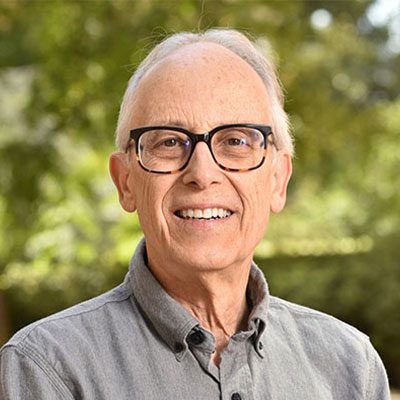
Scott H Chandler
Professor Emeritus, Integrative Biology And Physiology, University of California Los Angeles
schandler@physci.ucla.edu
(310) 206-0332
Publications
- Venugopal S, Ghulam-Jhelani Z, Ahn IS, Yang X, Wiedau M, Simmons D, Chandler SH. Early deficits in GABA inhibition parallels an increase in L-type Ca2+ currents in the jaw motor neurons of SOD1G93A mouse model for ALS.. Neurobiology of disease, 2023.
- Liu W, Venugopal S, Majid S, Ahn IS, Diamante G, Hong J, Yang X, Chandler SH. Single-cell RNA-seq analysis of the brainstem of mutant SOD1 mice reveals perturbed cell types and pathways of amyotrophic lateral sclerosis.. Neurobiology of disease, 2020.
- Seki S, Tanaka S, Yamada S, Tsuji T, Enomoto A, Ono Y, Chandler SH, Kogo M. Neuropeptide Y modulates membrane excitability in neonatal rat mesencephalic V neurons.. Journal of neuroscience research, 2020.
- Chandler SH. Reflections on my longtime friendship with Mike Levine.. Journal of neuroscience research, 2019.
- Seki S, Yamamoto T, Quinn K, Spigelman I, Pantazis A, Olcese R, Wiedau-Pazos M, Chandler SH, Venugopal S. Circuit-Specific Early Impairment of Proprioceptive Sensory Neurons in the SOD1G93A Mouse Model for ALS.. The Journal of neuroscience : the official journal of the Society for Neuroscience, 2019.
- Venugopal S, Seki S, Terman DH, Pantazis A, Olcese R, Wiedau-Pazos M, Chandler SH. Resurgent Na+ Current Offers Noise Modulation in Bursting Neurons.. PLoS computational biology, 2019.
- Salomon D, Martin-Harris L, Mullen B, Odegaard B, Zvinyatskovskiy A, Chandler SH. Brain literate: making neuroscience accessible to a wider audience of undergraduates.. Journal of undergraduate neuroscience education : JUNE : a publication of FUN, Faculty for Undergraduate Neuroscience, 2015.
- Venugopal S, Hsiao CF, Sonoda T, Wiedau-Pazos M, Chandler SH. Homeostatic dysregulation in membrane properties of masticatory motoneurons compared with oculomotor neurons in a mouse model for amyotrophic lateral sclerosis.. The Journal of neuroscience : the official journal of the Society for Neuroscience, 2015.
- Tsuruyama K, Hsiao CF, Chandler SH. Participation of a persistent sodium current and calcium-activated nonspecific cationic current to burst generation in trigeminal principal sensory neurons.. Journal of neurophysiology, 2013.
- Hsiao CF, Kaur G, Vong A, Bawa H, Chandler SH. Participation of Kv1 channels in control of membrane excitability and burst generation in mesencephalic V neurons.. Journal of neurophysiology, 2009.
- Hsiao CF, Gougar K, Asai J, Chandler SH. Intrinsic membrane properties and morphological characteristics of interneurons in the rat supratrigeminal region.. Journal of neuroscience research, 2007.
- Enomoto A, Han JM, Hsiao CF, Chandler SH. Sodium currents in mesencephalic trigeminal neurons from Nav1.6 null mice.. Journal of neurophysiology, 2007.
- Tanaka S, Chandler SH. Serotonergic modulation of persistent sodium currents and membrane excitability via cyclic AMP-protein kinase A cascade in mesencephalic V neurons.. Journal of neuroscience research, 2006.
- Enomoto A, Han JM, Hsiao CF, Wu N, Chandler SH. Participation of sodium currents in burst generation and control of membrane excitability in mesencephalic trigeminal neurons.. The Journal of neuroscience : the official journal of the Society for Neuroscience, 2006.
- Starling AJ, André VM, Cepeda C, de Lima M, Chandler SH, Levine MS. Alterations in N-methyl-D-aspartate receptor sensitivity and magnesium blockade occur early in development in the R6/2 mouse model of Huntington's disease.. Journal of neuroscience research, 2005.
- Hsiao CF, Wu N, Chandler SH. Voltage-dependent calcium currents in trigeminal motoneurons of early postnatal rats: modulation by 5-HT receptors.. Journal of neurophysiology, 2005.
- Wu N, Enomoto A, Tanaka S, Hsiao CF, Nykamp DQ, Izhikevich E, Chandler SH. Persistent sodium currents in mesencephalic v neurons participate in burst generation and control of membrane excitability.. Journal of neurophysiology, 2004.
- Ariano MA, Cepeda C, Calvert CR, Flores-Hernández J, Hernández-Echeagaray E, Klapstein GJ, Chandler SH, Aronin N, DiFiglia M, Levine MS. Striatal potassium channel dysfunction in Huntington's disease transgenic mice.. Journal of neurophysiology, 2004.
- Tanaka S, Wu N, Hsaio CF, Turman J, Chandler SH. Development of inward rectification and control of membrane excitability in mesencephalic v neurons.. Journal of neurophysiology, 2002.
- Turman JE, Lee OK, Chandler SH. Differential NR2A and NR2B expression between trigeminal neurons during early postnatal development.. Synapse (New York, N.Y.), 2002.
- Hsiao CF, Wu N, Levine MS, Chandler SH. Development and serotonergic modulation of NMDA bursting in rat trigeminal motoneurons.. Journal of neurophysiology, 2002.
